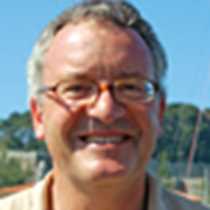Iona and Staffa
We are at risk of making things look too easy on this voyage. Yesterday, Inishmurray; today, Iona and Staffa, with the prospect of a landing on St Kilda in the next few days. It is worth reminding ourselves that very few of the good citizens of the Republic of Ireland or the subjects of Her Majesty will ever visit any of these delightful locations in their lifetimes. A Londoner wanting to visit Staffa, to experience the wonder of Fingal’s Cave, would have to get to Glasgow and then travel on to Oban before catching a ferry over to Mull. Two overnights in hotels chalked up already and a long road journey, much of it single track, across Mull to another ferry before reaching Iona where another night’s accommodation would be needed before checking out whether the boat to Staffa was running, for high winds can lead to cancelled sailings at all times of the year. From Tresco to Inishmore and Inishmurray, and now with spectacular landings on Iona and Staffa under our belt, even seasoned staff members are commenting on an exceptional voyage.
Some guests were ashore on Iona early enough to attend the daily ecumenical service in the Abbey, resplendent without its scaffold-clad tower for the first time in over a decade. Beside the abbey the corncrake was ‘singing,’ it’s scientific name of crex crex obviously onomatopoeic in origin. Once a common bird of British countryside its numbers had drastically reduced with changed farming methods that saw the decline of long hay meadows and corn fields. Special protection was afforded to these habitats on Iona which has become a redoubt for this endangered species, and it was exciting on our afternoon visit to Staffa to hear the corncrake there also where the National Trust for Scotland which owns that island has in recent years eliminated grazing by sheep to encourage habitat revival. Puffins were more plentiful than we have seen for several seasons at the height of their breeding season.
Iona was so revered for its primacy as an early Christian site in the northern realms that even the kings of Norway were, for a time, buried beside the abbey. Today Columba’s monastic site is still very much a place of spiritual activity with the Iona Community organizing retreats. The Celtic people speak of “thin places” where the boundary between this world and another (or the next) can occasionally be glimpsed. Iona is renowned as such a place and, after today’s experience, many of us would be happy to advance the claims of Staffa too.




